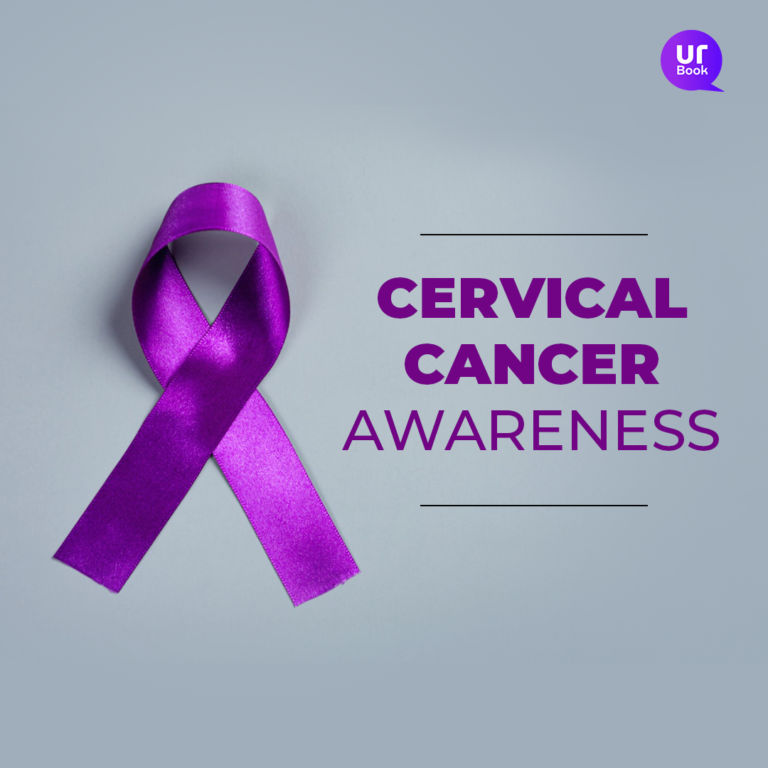
It’s not easy accepting a cancer diagnosis, but when detected at early stage we always have a better control over it. As you read further you will realise, we are discussing about one such cancer that has a better survival rate than any cancers when detected early. Awareness and knowing what the early sign can be and when to get screened is the only weapon you have. When cancer starts in the cervix, the lower part of the uterus, it’s called cervical cancer. It is the fourth most common cancer in women worldwide. In the UK, more than 3700 cervical cancer cases are diagnosed each year. In the US, the same number is 13,000, and in India, it is over 1 lakh.
Cervical cancer: understanding the silent killer
The human papillomavirus (HPV) is the root cause of about 95% of cervical cancers. There are many types of human papillomavirus, and most of them cause a commonplace infection of the reproductive tract.
In the majority of cases, the body gets rid of the virus, clearing the infection on its own. However, in a few cases, especially if it’s a high-risk HPV, the infection turns chronic and cancerous, which puts all women at risk for cervical cancers.
Who’s at risk of getting cervical cancer?
HPV is passed from one infected person—even when they have no symptoms—to another through sexual intercourse. So, although cervical cancer can happen at any age, it is more common in women over 40.
There are multiple factors that increase your risk of getting infected with HPV:
- Smoking
- Unprotected sex
- A weakened immune system
- Sexually transmitted infections
- Family history of cancer of the cervix
- Exposure to diethylstilbestrol (DES) in utero
- Multiple sexual partners, yours or your current companion’s
Cervical dysplasia, or early cell changes that occur right before cancer, and early-stage cervical cancers frequently have no symptoms. Hence, the name “silent killer.” That said, there are some signs to look out for:
- Light bleeding or irregular spotting between periods
- Spotting or bleeding even after menopause
- More than usual, watery vaginal discharge
- Atypically heavy flow during menses
- Bleeding post intercourse
We’d like to caution that abnormal bleeding doesn’t automatically mean that you have cervical cancer, but it should still be investigated by a healthcare practitioner.
Symptoms of advanced cervical cancer
Severe symptoms start to occur when cervical cancer metastasizes, i.e., spreads to other areas of the body:
- Fatigue
- One or both legs swell
- Discomfort in the vagina
- Loss of appetite and weight
- Pain or bleeding when defecating
- Foul or strange-smelling discharge
- Repeated pain in the legs, back, or pelvic region
- Trouble in micturating or pain or blood in the urine
Preventing cancer of the cervix
Every year, 4,000 women die of cervical cancer in the US. In India, about 75,000 succumb to it. Vaccination is the most simple and cost-effective way to prevent these needless deaths. The majority of cervical cancers are caused by two types of HPV, and the vaccines give 100% protection against both and other high-risk HPV.
The right time to get vaccinated is before a person is at risk of exposure, i.e., before they become sexually active, making 11 or 12 the ideal age. That said, you can get an HPV vaccine until the age of 26 to reduce the risk of cervical cancers.
It should be noted that men can get HPV too, but they can’t be tested for it. Nevertheless, they should be vaccinated. It not only protects the health of future partners but also prevents them from getting throat, penile, and anal cancer.
Vaccination cannot replace cervical cancer screening
Although vaccination is crucial to thwarting cervical cancers, it doesn’t preclude screening. For women above 30, a pap test and an HPV test are vital to detect pre-cancer and cancer. The first test looks for abnormal cells in the cervix, while the latter helps spot high-risk strains of human papillomavirus.
Get both done even if you feel absolutely healthy and have no symptoms, for the simple reason that screening catches cancer at an early stage when the survival rate is over 90%!
More tests to detect cervical cancer
If the results of the pap and HPV tests point towards cervical cancer, you may need to undergo further tests like an X-ray, pelvic exam, MRI, and CAT scan. The two most prevalent procedures are:
- A colposcopy uses a colposcope (a thin tube with a camera attached) to get a lighted, magnified view of the cervix and vagina. Typically, done to guide a biopsy, the test is similar to a pap smear in that at no point is the colposcope inserted in the body.
- A biopsy takes a small tissue sample and then checks it for cancer cells. It is the only way to confirm a cervical cancer diagnosis.
Surviving cervical cancer
The number of cancers that can be wiped out for good is limited. Cervical cancer is one of them. Do your part by getting vaccinated, practising safe sex, and scheduling regular check-ups with your gynaecologist. Screening and detecting this terrible disease can be lifesaving.
And while a diagnosis like this may leave you asking ‘Why Me?’, it is merely a passage in the song of your life, not the end note. So, we urge you to talk to your healthcare team to lay any concerns to rest and use tools that make following a treatment plan simpler.
Sources
